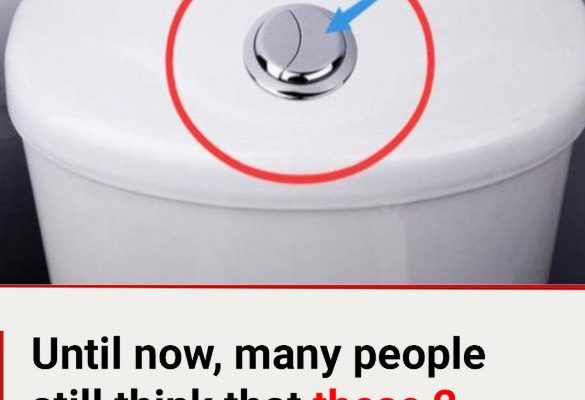The Mystery of the Dual Flush Toilet: Why You Have Two Buttons and How They Work
Have you ever stood in front of a toilet and wondered why there are two flush buttons or levers? One is smaller, and the other is larger. These modern marvels are known as “dual flush” toilets. But what’s the purpose behind this clever design? Let’s dive into the story, uncover the mystery, and see how these toilets help save the planet!
The Dual Flush Concept
Dual flush toilets are designed with two distinct buttons or levers, each connected to a different flushing mechanism. One is usually marked smaller, while the other is larger, and both serve specific purposes.
The smaller button or lever activates a flush that uses less water, while the larger one releases more water. But why does this matter?
Water Conservation: The Key to Dual Flushing
Water is a precious resource, and these dual flush toilets were designed with that in mind. When you press the smaller button, the toilet uses around 3 to 4.5 liters of water, just enough to clear liquid waste. On the other hand, the larger button releases 6 to 9 liters, which is ideal for solid waste.
Think of it like this: “Why use a firehose to water a single flower?” The same logic applies here! By choosing the right button for your needs, you’re not just flushing waste—you’re flushing responsibly.
How Much Water Can You Save?

Here’s the exciting part: using a dual flush toilet can save a lot of water over time. A household that switches from a single-flush system to a dual-flush system could save up to 20,000 liters of water annually! That’s like saving enough water to fill an entire swimming pool every year.
Not only does this reduce your water bills, but it also helps protect the environment. Imagine making such a big impact by simply choosing the right button!
The Brilliant Idea Behind Dual Flush Toilets
So, who came up with this clever concept? It all started with Victor Papanek, an American industrial designer, who introduced the idea of dual flushing in his 1976 book “Design for the Real World.”
The idea didn’t stay on paper for long. In 1980, Australia became the first country to implement dual flush toilets, turning Papanek’s vision into reality. The country faced water scarcity, and this innovation proved to be a game-changer in conserving water. Today, dual flush toilets are a common sight in homes, offices, and public places worldwide.
How to Use a Dual Flush Toilet the Smart Way
Here’s a quick guide to becoming a dual-flush expert:
- Look for the symbols or sizes: The smaller button or lever might have a half-circle, a raindrop, or simply be marked as smaller. This is for liquid waste.
- Press the larger one when needed: The larger button or lever, often with a full-circle symbol or a larger size, is for solid waste.
- Flush wisely: Next time you use the restroom, think about the kind of waste you’re flushing and pick the right button. Every choice you make adds up to significant water savings.
Why It Matters
Every small step we take to save water makes a difference. The dual flush system is a perfect example of how a simple innovation can have a huge impact on the planet. It’s smart, efficient, and environmentally friendly—a win-win for everyone!
What do you think about the dual flush system? Have you used one before, and did you know about its water-saving benefits? Share your thoughts in the comments below. Let’s keep the conversation flowing—just like our toilets! 🚽
What do you think of the story? Share your thoughts in the comments below!



